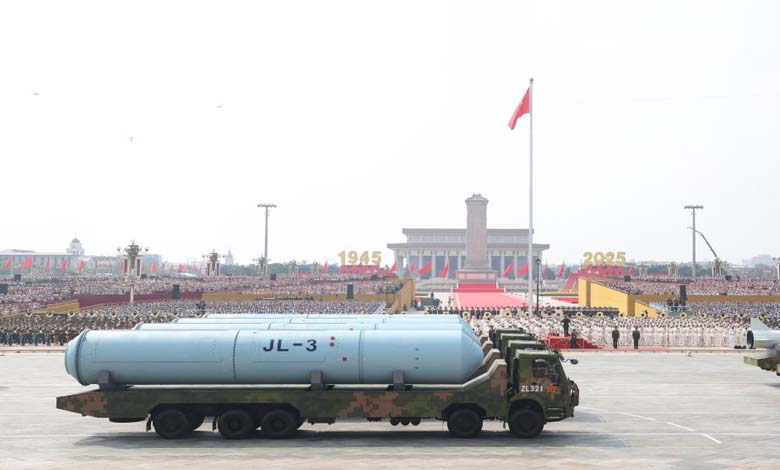JL-3 Intercontinental: The Ballistic Missile Extending Beijing’s Reach Beyond the Atlantic

During the military parade held on September 3 to commemorate the 80th anniversary of the end of World War II in Asia, China revealed one of its most significant recent military achievements.
For the first time, the People’s Liberation Army showcased the intercontinental ballistic missile “JL-3,” designed for submarine launches, according to Military Watch magazine.
-
Spectacular Progress: How Did China Build Its Air Power on Its Own?
-
Women, Gambling and Naivety: China Thwarts Three Espionage Plots
This missile represents the latest generation in China’s strategic arsenal, a direct successor to the “JL-2,” which was first displayed during the parade of October 1, 2019.
The most striking improvement is its extended range: the “JL-3” can strike strategic targets deep within Europe or across the U.S. mainland, even when launched from positions in Northeast Asia.
Military experts emphasize that the “JL-3” is not only about greater range but also about enhanced payload capacity, enabling it to carry multiple nuclear warheads.
This upgrade grants the missile a significant ability to bypass modern missile defense systems, making interception far more challenging and cementing its role as a central component of China’s sea-based nuclear deterrence.
-
J-20s Now Guarding Beijing’s Skies: A Strategic Leap in China’s Air Force Capabilities
-
Submarines, Missiles, and Fighters: A Comparison of Strategic Weapons between China and the United States
Comparison with Russia and the United States
Despite the breakthrough, China’s sea-based nuclear deterrent remains modest compared to those of other major powers. Currently, Beijing operates six Type 094 submarines, each carrying 12 “JL-2” or “JL-3” missiles.
Russia maintains relative superiority with a fleet of 13 ballistic missile submarines—five older “Delta” class and eight modern “Borei” class—each capable of carrying 16 missiles. These submarines also feature advanced stealth and endurance capabilities, strengthening their strategic effectiveness.
The United States remains unmatched, with the world’s largest and most powerful fleet: 18 Ohio-class submarines, each able to carry up to 20 ballistic missiles. Their sheer size, firepower, and decades of operational expertise place the U.S. Navy far ahead.
-
Facing China and U.S. Ambiguity.. Japan Rebuilds Its Military Power
-
Ukrainian Accusations Against China for Supplying Russian Arms Factories… Beijing Responds Sharply
Narrowing the Gap, Not Closing It
The deployment of the “JL-3” undeniably enhances China’s military posture and bolsters its deterrence capacity. Nevertheless, this advantage is likely transitional, pending the anticipated entry into service of the more advanced Type 096 submarines in the early 2030s.
While China has caught up or even surpassed its rivals in certain fields—such as advanced surface warships, long-range drones, and some hypersonic missile systems—it still lags significantly in the domain of strategic submarines. Beijing has yet to achieve the technological depth and operational experience of Washington and Moscow.
-
China bares its teeth… A major production leap for stealth fighters
-
China Changes the History of Warfare with a Non-Nuclear Warhead
Implications for the Asia-Pacific Balance of Power
The implications of the “JL-3” go well beyond the military sphere. Its deployment has immediate geopolitical consequences in the Asia-Pacific region. Japan and Australia, for instance, see this new weapon as further justification for reinforcing their military alliances with the United States within the framework of growing “containment” strategies directed at Beijing.
Moreover, China’s ability to launch long-range strikes on U.S. territory from relatively secure positions in the South China Sea or the Sea of Japan adds another layer of pressure to Sino-American relations.
This development complicates the delicate balance of mutual deterrence between the two powers and injects greater complexity into the broader global security equation.












